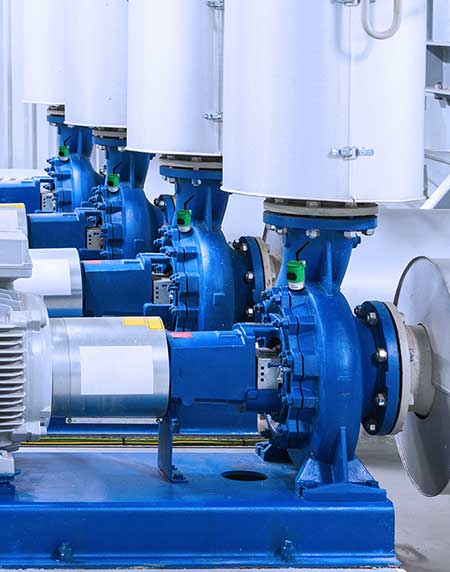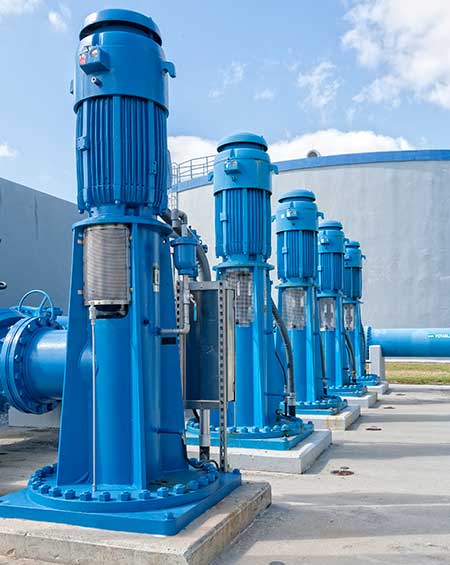
When we look back on the COVID-19 pandemic at some future date, we may marvel at all the ways society was prepared for the challenges that the novel coronavirus presented.
Existing technologies enabled large numbers of people to work remotely virtually overnight. Creative accommodations made it possible for essential workers to interact safely with the public while keeping communities and the economy going.
The events of 2020 also laid bare gaps that still need to be filled, including some in the pumps and systems industry. With scientists warning that more pandemics are coming, and with the frequency and severity of natural disasters also on the rise, there is much work to do.
Municipalities in some parts of the country face new pressures to make pumping stations and other infrastructure more resilient. Now is the time to start applying the valuable lessons learned from these unplanned events.

Lesson 1: More IIoT Is Needed to Make Remote Operations Possible
The highly contagious nature of COVID-19 forced every segment of society to rethink the need for face-to-face interaction, resulting in accelerated use of remote monitoring, control and communication systems across many industries. The applications for remotely operated systems, however, extend far beyond a pandemic. Hurricanes, floods and other natural disasters also pose safety risks and complicate in-person operation of the critical pumping and flood control systems needed to limit catastrophic damage.
Industrial internet of things (IIoT) technologies can play crucial roles in these events. For example, in hurricane-prone areas, heavy debris, storm surges and flooding can create dangerous conditions for those responsible for monitoring and maintaining pumping and other systems. Vibration, temperature and flow sensors mounted on a motor or on system components can be monitored remotely with IoT to detect potential problems or understand a disaster’s impacts.
The good news is that the use of sensors is on the rise, as are the capabilities of the latest IIoT technologies. But the build-out is still in its early stages. Moving forward, look for all-in-one universal solutions that are brand and product agnostic, and that can manage an overall monitoring and control system from a single dashboard.
Lesson 2: Preparing for the Unknown Is Easier With a Systems Approach
From vaccine development to safety protocols, the pandemic reminds us of the value of taking a systemic approach to problem-solving.
The same is true for flood control and for other pumping-related issues. Consider the city of New Orleans, which sits below sea level and where municipal pump stations must be designed to manage 500-year floods.
Knowing that a single station can pump 30,000 gallons per minute (gpm) is important.
But it is more valuable to understand how that station interacts with the larger system of levees, pumps and floodgates during a storm surge or hurricane.
When contemplating future replacement plans, cities and their engineering teams should consider expected downtime, as well as the efficiencies and protections needed for the system. Even after adaptations have been made, maintenance activities should focus on mitigating risk and ensuring that motors, pumps and entire systems perform as intended.
Lesson 3: Pump Station Solutions Are Not One-Size-Fits-All Solutions
Like pandemic responses, not all pump station designs are appropriate in every situation. For small systems where downtime does not come at a high cost, general motor specifications may be perfectly appropriate. Those specs, however, may fall short for mission-critical pumps, especially those that must withstand the harsh conditions that often accompany
a disaster.
In New Orleans, for example, electric motor-powered pump stations in low-lying downtown areas are designed to pump water continuously into channels in normal conditions and during storms when flooding occurs. But diesel-powered engines are needed to build redundancy into the system to ensure operation and water removal in the most severe cases. Similarly, in Houston, humid conditions and heavy windblown rain require that motors receive other special protections. In Arizona, by contrast, pump stations located in desert conditions may need protection from heat and sand, which can have a corrosive effect on motor and pump parts.
Engineers must take rainfall, elevation, water levels and other environmental factors into consideration when specifying pump station protections. The key is to spec motors and other components appropriately without applying more specs to the system. Engineers who regularly work with motor manufacturers understand the environmental conditions that demand extra protection.
Lesson 4: Energy Efficiency Should Not Be the Sole Consideration in Motor Selection
In a pandemic, our priorities change. For example, we may choose safety over economy. Priorities may also change when designing pump stations to operate in a natural disaster. While motor energy efficiency is important, it should not necessarily be the deciding factor. Consider fire pump motors, which rarely run. When needed, reliability and pump output—not energy efficiency—is what matters and should drive selection.
For pump station motors that run continuously, efficiency is typically a top consideration. But, the second- and third-tier pump stations, activated only after a storm surge or massive rain, play a critical role in preventing water from overwhelming a system. It is important to understand the pump’s environment and how the pump, motor and drive fit into the larger system. Motor selection for these pumps should be based on ensuring they have the power they need when they need it.
Lesson 5: Engineers & Motor Manufacturers Should Be Working Together
A bright spot of the pandemic has been the medical and technological breakthroughs achieved through interdisciplinary collaboration. Moving forward, the pump and systems industry can do a better job of following this example.
Working together, motor manufacturers, pump engineers, and others can leverage IoT and machine-learning to eliminate high-failure components and create more reliable systems. Engineers are encouraged to get involved in industry standard committees to stay abreast of the latest integrated motor-drives, especially those that use IoT to enable communication with and between system components and improve overall system reliability.
Conversely, motor manufacturers can benefit from learning more about how their motors integrate with larger pumping systems. By solving problems at the system level, customers are more likely to get the solutions they need. And we will all be better prepared for whatever comes next.
References
- en.unesco.org/news/pandemics-increase-frequency-and-severity-unless-biodiversity-loss-addressed
- noaa.gov/media-release/record-breaking-atlantic-hurricane-season-draws-to-end

